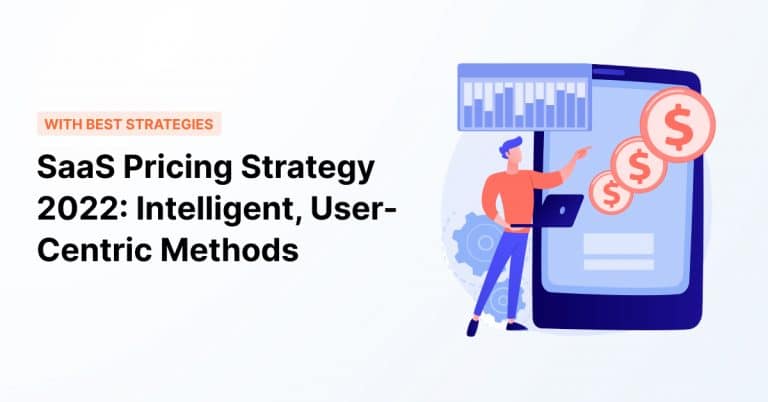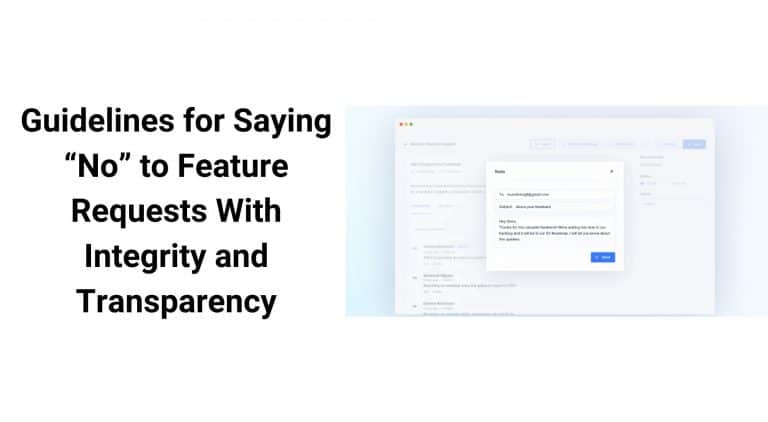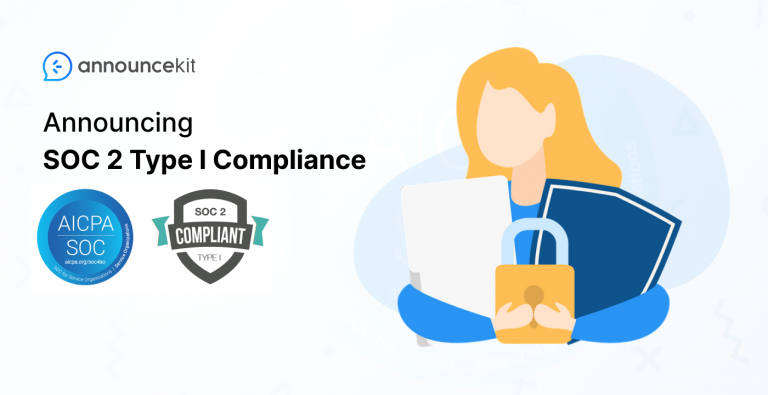You are constantly developing and improving your product, and you need your clients to be aware of all the progress you have made.
However, you don’t want to bombard them with so many updates that they start to ignore them. So, how do you strike the correct balance? What is the best way to publish product updates?
Learn the best way and how often to publish product updates and how using AnnounceKit can help.
Table of Contents
- What is Release Cadence?
- 6 Factors To Consider When Deciding How Often You Should Publish Product Updates
- How Often Should You Publish Product Updates? Qualities of a Good Release Cadence
- Finding the Sweet Spot: Delivering Helpful and Well-Timed Product Updates With AnnounceKit
What is Release Cadence?
What the heck is release cadence, and how does it impact your product users?

It’s not as complicated as it sounds. Release cadence refers to the frequency at which you release new or updated versions of your app, software, or other products.
Striking the right release cadence with your client base is crucial — you need to show your clients that you are listening to them and updating your product accordingly. However, you do not want to overload them with constant updates and re-releases — this is frustrating for users and looks disorganized.
What are the different kinds of product release cadences and what are the pros and cons of each?
Slow Release Cadence
A slower release cadence would be monthly or quarterly updates. The benefits of this slowed turnaround include:
- Less user disruption: Updates are reliable and cohesive, meaning less disruption for users.
- More time dedicated: Giving the programmers more time to release product updates means higher quality, more stable releases.
- Easier to regulate: Updating at a slower rate means it is easier to ensure security and compliance.
- Strategic updates: A slower cadence lets you roadmap updates for better cross-functional alignment.
Cons of a slower release cadence for product updates include:
- Lag in response: Slowed response to user feedback.
- More bugs: Bigger releases cause more risk of bugs and crashes.
- Slowed release time: Delayed delivery of product values might cause users to go elsewhere instead of waiting for an update.
- Product stagnation: Users may interpret sporadic updates as the product being outdated and idle.
Fast Release Cadence
If you want your product to have a fast release cadence, aim for monthly or even bi-weekly updates.
Pros of a faster release cadence include:
- Faster response to feedback: A quick release cadence allows you to integrate user input in real time.
- Responsive value delivery: Users do not have to wait to see improvements or bug fixes.
- Keeps product fresh: Regular updates keep the product alive and at the top of users’ inboxes.
- Smaller, more manageable updates: Fixing problems as they come instead of all at once is more manageable for programmers.
- Competitive advantage: Fast updates keep your product ahead of the competition.
The cons of expediting product updates are as follows:
- User fatigue: Users can get annoyed by constant updates and start to ignore them.
- Short-term fixes, long-term problems: Without adequate time to form a fix, your product may develop “band-aid” fixes that accumulate into larger issues.
- Increased quality assurance: More updates mean more testing from quality assurance.
- More coordination for programmers: An expedited schedule creates stress, burnout, and job turnover.

6 Factors To Consider When Deciding How Often You Should Publish Product Updates
Your product update cadence can greatly affect your working schedule, team size, and overall team synthesis. To get the most out of your product update schedule, consider these factors:
#1: Your Roadmap
Before you decide on cadence, you should develop a product roadmap.
Your product roadmap is meant to give everyone a good idea of when and how you plan to update your product. A big update should be planned with your product development team to ensure they have adequate time to respond to user feedback.
This roadmap does not need to be extremely detailed or include every bug and fix, it just needs to show your team (and investors) your strategy for responding to user feedback.
Keep in mind that the product roadmap is not set in stone — it can shift based on updated priorities and user feedback. However, building a roadmap with your team sets expectations for note responsiveness and bug fixes later down the line, which is important for deciding product release cadence.
Are you struggling to incorporate product updates into your roadmap? Consider a product update software like AnnounceKit to take the guesswork out of it for you and allow you to better focus on your product.

Manage Product Release For Your Brand:
Quick Setup, Easy To Use
Release notes, changelog, and other product announcement
tools and features from a single place.
#2: Your Team’s Resources and Capabilities
Another thing you should consider when planning product updates is your team’s capacity. You want to release product updates regularly and be responsive to user feedback. However, you don’t want to overload your production team, or over-promise and under-deliver.
If you are figuring out how often you should publish product updates, have an honest conversation with your team about realistic timelines and turnarounds on things like development, feedback incorporation, and bug fixes.
If your team is too busy to handle regular update announcements, consider using AnnounceKit. Our software is designed to be easy for both programmers and users to interface with, creating a seamless method of communication perfect for announcing product updates.
#3: The Type of Product
The nature of your product and its complexity will also impact your update cadence. The reality is that a simple product is going to be easier to update than something more complex.
Seasonality may also impact your update cadence, as your product may be more popular in one season than another, and you want to make sure updates are ready when needed.
#4: User Expectations
One of the most important factors in product release cadence is the needs and expectations of your customer base. Some customers expect regular new features and widgets, while others are less tolerant of change.
For example, if you have a SaaS-type product, your user base will expect responsive updates to meet their needs. Your team will need to be on top of bug fixes and patches to ensure that you stay competitive in the field.
A larger piece of software, such as a corporate program, may find these constant updates disruptive, or indicative of a poorly made product. For these programs, a slow-release cadence at regular intervals is preferred.
#5: Customer Feedback
Ultimately you want to create a product that your customers prefer over the competition. Product updates are all about listening to your customers and reacting to their wants and needs for the programs they use. This philosophy, as well as releasing the announcements in a way users see, can put you on the path to product success.
If you struggle with incorporating customer feedback, consider using AnnounceKit. Our customized software is designed to provide nearly instant customer feedback, allowing you to create an idealized product. AnnounceKit also allows you to target update notifications to specific groups of users, perfect for bugs and code patches.
#6: The Nature of the Update
Updates are only as important as the perks they add or the products they fix. If your product updates don’t add tangible value to your product, then your cadence won’t matter.
When announcing product updates, there are typically two focuses:
- New features
- Product fixes
New features are designed to enhance product capabilities for the user. This can be in response to customer feedback or competitive needs. Adding new features is designed to attract new users and retain current users, so it needs to be announced to a large audience.
Product fixes are designed to improve user experience within the current product. These updates improve security and stability, and aim to address any issues with the user interface. Updates of this nature only need to be brought to the attention of current product users.
While new features drive product innovation, consistent product patches build trust with users. Both of these updates require a different announcement approach.
How Often Should You Publish Product Updates? Qualities of a Good Release Cadence
Take some time to ruminate on the above factors and build a roadmap that makes sense. It is important to get a product release cadence that works for you — you want to respond to customer needs, but not annoy them with endless updates.
So, how often should you announce updates? Here is the perfect release cadence:
Predictable
Make a set schedule for your product updates. This gives your team ample time for fixes and patches. It also sets customer expectations.
Timely
Timely updates make users feel that you are listening to their feedback. If you do not update regularly, your product can feel outdated or “dead” to potential buyers.
Proportional
All updates need to provide something tangible to the user. In other words, don’t update your product just for the sake of updating it. Make infrequent smaller updates, but save the big product overhauls for regular intervals. This gives your user a good idea of what to expect for big-scope changes.
Finding the Sweet Spot: Delivering Helpful and Well-Timed Product Updates With AnnounceKit
Creating dynamic, useful software is a challenge. Between balancing user feedback and realistic bug fixes, you don’t have a lot of time for email chains. However, you still need your user base to know about the hard work your team put in to make the best product possible.
That’s where AnnounceKit comes in. Our product update service reaches your audience base without annoying them. We offer:
- Easy-to-use widgets for your product
- Ability to directly request new features
- Customer-facing roadmap to build trust and transparency
- Ability to boost big updates for users
- Slack and email update notifications
- Ability to target updates to specific user audiences
- Team management
- AI Assist
- Seamless changelog integration
- And more
You work hard on your updates, and you want to craft a software product that meets the needs of your users. With AnnounceKit you can create a user dialogue and update loop that bests your product’s competition. Check out our website to learn more about what AnnounceKit can do for you!

Manage Product Release For Your Brand:
Quick Setup, Easy To Use
Release notes, changelog, and other product announcement
tools and features from a single place.







